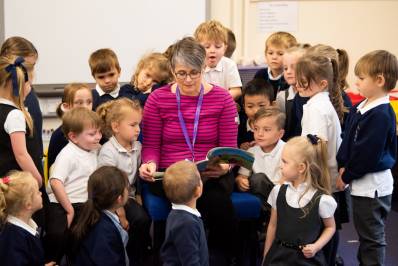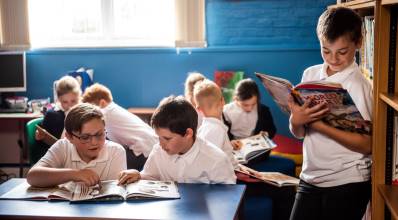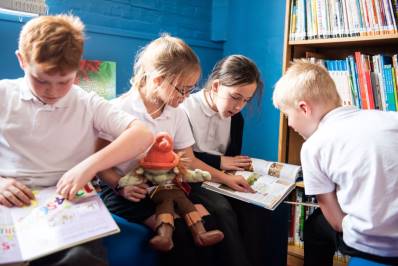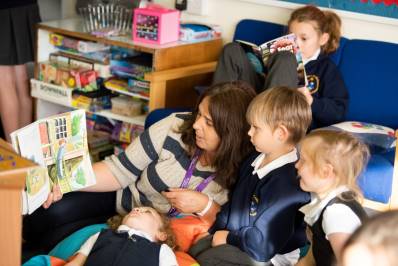Reading
At Diss, we teach a broad and balanced curriculum which puts reading at the center of our children's learning. All children are read to daily and we teach with a thematic approach meaning that children can immerse themselves in books across the curriculum. As well as wanting our children to love reading for enjoyment we also want reading to be a valuable tool in their learning.
The Diss Reading Experience
- Teachers read daily to their class from high quality texts.
- Whole class reading is taught daily, exposing children to fiction, non-fiction, poetry
- English lessons are based around high quality texts
- Teachers share in the love of reading
- Aspiration for children to read and experience a broad selection of books
- Our Library provides a fantastic range of books for children to read at home and in school
- Reading Eggpress provides online access to lessons and books at home.
Class Texts
50 Books to Read in Year 3 50 Books to Read in Year 5
50 Books to Read in Year 4 50 Books to Read in Year 6
Reading VIPERS
Reading is taught as a whole class with a focus each day on the Reading VIPERS. Children know which reading skill they are focusing on each lesson and are explicitly taught how to use these skills.
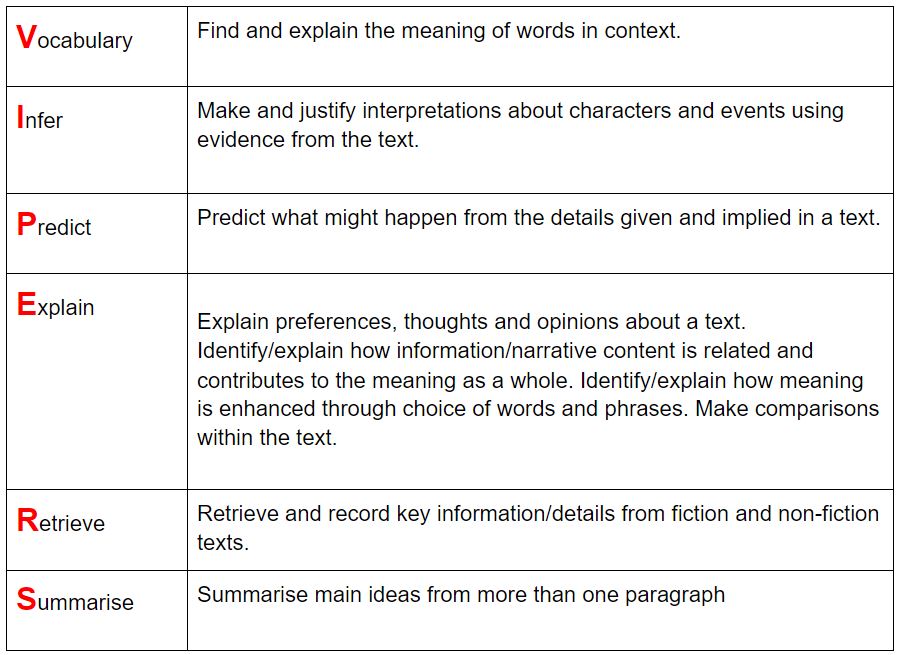
Reading at Home - Top Tips
1) CHOOSE A QUIET TIME
Set aside a quiet time with no distractions. 10 to 15 minutes is usually long enough.
2) MAKE READING ENJOYABLE
Make reading an enjoyable experience. Sit with your child. Try not to pressurise if he or she is reluctant. If your child loses interest then do something else and come back to it later.
3) MAINTAIN THE FLOW
If your child mispronounces a word do not interrupt immediately. Allow your child to self-correct using their phonics skills. You can always discuss mispronounced words at the end of your reading time.
4) SUCCESS IS THE KEY
Struggling with a book with many unknown words is counterproductive because the flow is lost, the text cannot be understood, and children can easily become reluctant readers. Look at the '50 Books to Read' link above for your child's year group as a guide. If you feel like the books your child is bringing home are too difficult, please speak to their teacher.
5) VISIT THE LIBRARY
Encourage your child to use the public library regularly. Remember your child should have a book from our school library.
6) REGULAR PRACTICE
Try to read with your child every day. Little and often is best.
7) COMMUNICATE WITH THE SCHOOL
Your child has a reading record book. Try to communicate regularly with positive comments and any concerns. Your child will then know that you are interested in their progress and that you value reading. We would love to hear the children’s opinions of the texts they read and their progress.
8) TALK ABOUT THE BOOKS
There is more to being a good reader than just being able to read the words accurately. Being able to understand what has been read is just as important. Always talk to your child about the book; about the pictures, the characters, how they think the story will end, their favourite part. You will then be able to see how well they have understood and you will help them to develop good comprehension skills. There are some questions below that you can use to build your child's comprehension.
9) VARIETY IS IMPORTANT
Remember that children need to experience a variety of reading materials eg. picture books, hardbacks, comics, magazines, poems, recipes, instructions and information books. Don't forget that your child has a login for Reading Express which has lessons as well as a large library of books to read.
Here are some questions, in the Reading VIPERS style, to support you with reading at home
Vocabulary
- What do the words ...... and …… suggest about the character, setting and mood?
- Which word tells you that….?
- Which keyword tells you about the character/setting/mood?
- Find one word in the text which means……
- Find and highlight the word that is closest in meaning to…….
- Find a word or phrase which shows/suggests that…….
Infer
- Find and copy a group of words which show that…
- How do these words make the reader feel? How does this paragraph suggest this?
- How do the descriptions of …… show that they are ……..
- How can you tell that……
- What impression of …… do you get from these paragraphs?
- What voice might these characters use?
- What was …. thinking when…..
- Who is telling the story?
Predict
- From the cover what do you think this text is going to be about?
- What is happening now? What happened before this? What will happen after?
- What does this paragraph suggest will happen next? What makes you think this?
- Do you think the choice of setting will influence how the plot develops?
- Do you think… will happen? Yes, no or maybe? Explain your answer using evidence from the text.
Explain
- Why is the text arranged in this way?
- What structures has the author used?
- What is the purpose of this text feature?
- Is the use of ….. effective?
- The mood of the character changes throughout the text. Find and copy the phrases which show this.
- What is the author’s point of view?
- What affect does ….. have on the audience?
- How does the author engage the reader here?
- Which words and phrases did ….. effectively?
- Which section was the most interesting/exciting part?
- How are these sections linked?
Retrieve
- How would you describe this story/text? What genre is it? How do you know?
- How did…? • How often…? • Who had…? Who is…? Who did….?
- What happened to…?
- What does…. do?
- How ….. is ……..? • What can you learn from …… from this section?
- Give one example of……
- The story is told from whose perspective?
Summarise
- Can you number these events 1-5 in the order that they happened?
- What happened after …….?
- What was the first thing that happened in the story?
- Can you summarise in a sentence the opening/middle/end of the story?
- In what order do these chapter headings come in the story?

 Diss Church of England
Diss Church of England
